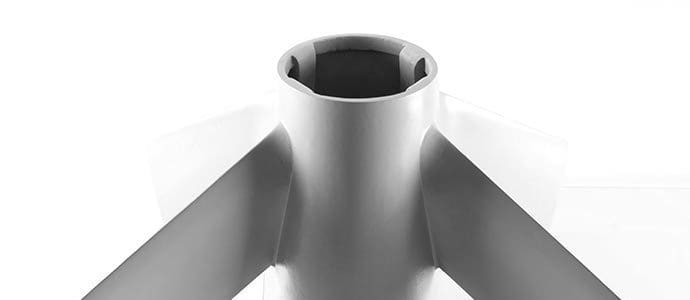Facts About Alcast Company Revealed
Table of ContentsThe Definitive Guide to Alcast CompanyAlcast Company Can Be Fun For EveryoneEverything about Alcast CompanyThe Definitive Guide to Alcast CompanyTop Guidelines Of Alcast CompanyThe Basic Principles Of Alcast Company
The subtle distinction hinges on the chemical content. Chemical Comparison of Cast Aluminum Alloys Silicon promotes castability by minimizing the alloy's melting temperature and enhancing fluidness throughout casting. It plays an essential function in permitting complex mold and mildews to be loaded properly. Furthermore, silicon adds to the alloy's stamina and wear resistance, making it important in applications where toughness is important, such as vehicle parts and engine parts.It additionally enhances the machinability of the alloy, making it simpler to refine into completed products. By doing this, iron contributes to the overall workability of light weight aluminum alloys. Copper boosts electrical conductivity, making it beneficial in electrical applications. It also boosts rust resistance and contributes to the alloy's overall stamina.
Manganese adds to the toughness of aluminum alloys and improves workability (aluminum casting company). It is commonly made use of in wrought aluminum items like sheets, extrusions, and accounts. The visibility of manganese help in the alloy's formability and resistance to cracking during fabrication processes. Magnesium is a light-weight component that provides toughness and effect resistance to light weight aluminum alloys.
All about Alcast Company
Zinc boosts the castability of aluminum alloys and assists manage the solidification procedure throughout casting. It improves the alloy's toughness and firmness.

The key thermal conductivity, tensile stamina, return strength, and prolongation vary. Among the above alloys, A356 has the highest possible thermal conductivity, and A380 and ADC12 have the most affordable.
The Facts About Alcast Company Revealed

In accuracy casting, 6063 is fit for applications where intricate geometries and high-quality surface area finishes are critical. Examples include telecommunication rooms, where the alloy's remarkable formability permits smooth and aesthetically pleasing layouts while keeping structural stability. In the Lights Solutions market, precision-cast 6063 components produce sophisticated and effective lights components that require complex shapes and good thermal efficiency.
The A360 exhibits remarkable elongation, making it excellent for complicated and thin-walled components. In accuracy casting applications, A360 is fit for sectors such as Customer Electronic Devices, Telecommunication, and Power Tools.
Getting My Alcast Company To Work
Its one-of-a-kind properties make A360 an important selection for accuracy casting in these sectors, improving item resilience and top quality. Aluminum Casting. Aluminum alloy 380, or A380, is a widely used spreading alloy with numerous distinctive characteristics.
In accuracy casting, aluminum 413 shines in the Consumer Electronics and Power Tools sectors. This alloy's remarkable rust resistance makes it an outstanding choice for outside applications, ensuring long-lasting, sturdy products in the mentioned markets.
Getting My Alcast Company To Work
The light weight aluminum alloy you pick will significantly impact both the casting process and the properties of the final product. Since of this, you must make your decision very carefully and take an informed strategy.
Establishing one of the most appropriate light weight aluminum alloy for your application More Bonuses will suggest weighing a wide array of qualities. These comparative alloy attributes comply with the North American Pass Away Casting Organization's guidelines, and we have actually separated them right into two categories. The initial classification addresses alloy attributes that affect the production process. The second covers characteristics impacting the properties of the end product.
Alcast Company - The Facts
The alloy you choose for die casting directly impacts a number of elements of the casting process, like exactly how very easy the alloy is to function with and if it is susceptible to casting problems. Warm breaking, also referred to as solidification cracking, is a normal die spreading problem for aluminum alloys that can result in inner or surface-level rips or cracks.
Particular aluminum alloys are extra at risk to hot fracturing than others, and your selection must consider this. It can damage both the actors and the die, so you must look for alloys with high anti-soldering buildings.
Rust resistance, which is currently a significant feature of aluminum, can differ considerably from alloy to alloy and is an important particular to take into consideration depending upon the ecological problems your product will be exposed to (Aluminum Castings). Put on resistance is another residential property frequently looked for in aluminum items and can differentiate some alloys